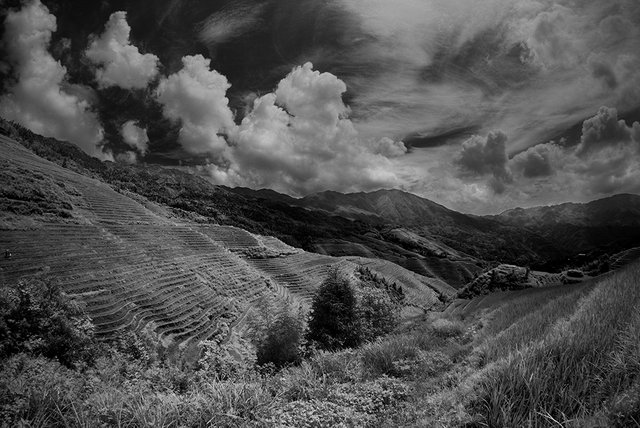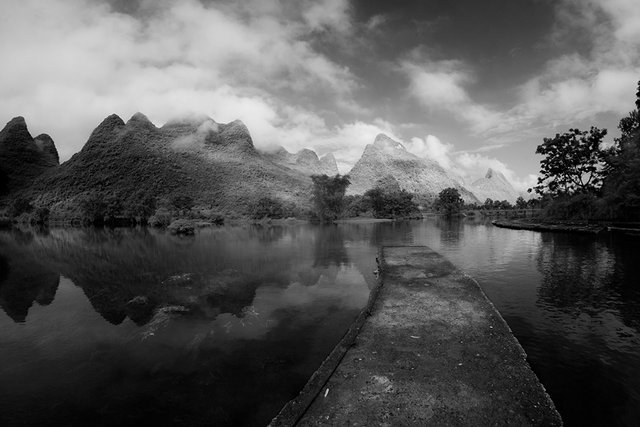Lens focal length distribution in Guilin
I have promised to do an analysis of my lens focal length usage for the people who will participate in our photographic tour to Guilin and Shenzhen in China.
I think it is important to start with some background as it definitely has an influence on the outcome of such an analysis.

First of all, in 2013, on my trip to China, I made a decision to drastically reduce the weight of my photography gear. At that time, and for many years before, I was using Nikon cameras. For that specific trip, I took one camera body (Nikon 800) and three lenses (Nikkor 14-24mm, Nikkor 24-120mm and Nikkor 70-200).
Most people will agree with me that these focal lengths, and this specific set of lenses, will cover basically every travel situation, and will allow for excellent results (as far as technology is concerned), but it weighs in at 4.3 KG!
This is unfortunately not the only gear that you take with you - remember there is a tripod, there is a set of filters, spare batteries and so on. For the Nikon, to just get the option to do interval timer shooting, I bought the Nikon MC-36A remote release which on its own weighs in at 280 grams!
Because of the size of these lenses, I also had to use a huge camera bag - the excellent ThinkTank Airport Commuter.
After long and in-depth research, I eventually decided to change the full system to a smaller, mirrorless system. I could most likely change to a smaller Nikon system as well but during my research, I found out that there is one big advantage of mirrorless cameras that people do not talk regularly talk about, and that is the fact that because the lens can be closer to the sensor, the lens design allows for physically smaller lenses for the same focal length.
So I made the choice to switch to Fujifilm. Because of the APS-C size sensor and the mirrorless design, they end up much smaller cameras and lenses.
My equivalent Fujifilm setup to get a similar reach was as follows (the 35mm full-frame equivalent field-fo-views are shown in brackets):
- Fujinon 10-24mm F4 lens (15-36mm)
- Fujinon 18-55mm F2.8-F4 (27-82mm)
- Fujinon 55-200mm F4-F5.6 (82-300mm)
This, coupled with the Fujifilm X-T1 weighs in at 1.7Kg!
And because of the smaller size and lighter weight, I could also downscale my tripod and my camera bag. And because all Fujifilm cameras have a built-in interval timer, I could also get rid of the huge external remote control/interval timer.
With time the lens collection has expanded, but I do not necessarily take all the lenses with me when travelling.
Currently, my camera gear consists of
- Fujifilm X-T1 (dedicated infrared converted)
- Fujifilm X-T3
- Fujifilm X100F
The lenses are:
Fixed focal lengths:
- 9mm Laowa
- 14mm Fujinon
- 27mm Fujinon
- 35mm Fujinon
- 50mm Fujinon
Zoom lenses:
- 10-24mm Fujinon
- 55-200mm Fujinon
You will notice that I do not list the 18-55 lens anymore, that is because I decided to change to lenses that are weather sealed where possible. The first one to go was the 18-55. In its place, I use the 35mm F2 and 50mm F2. I am missing some focal lengths, but that is actually covered by my Fujifilm X100F with 18mm and 23mm focal lengths. (The X100F also acts as my backup body, but, with time, became much more than that for me.)
If water resistance is not a big thing for you (if you live mostly in a dry place) then the 18-55 would be a better choice, as it is an excellent lens and cover a great range of focal lengths.
My next post will show the actual lens focal length distribution.

The two photos in this post were taken in the greater Guilin area with the Samyang 8mm fisheye lens. After some barrel distortion was removed the actual focal length is similar to my current ultra-wide lens, the 9mm Laowa. The 35mm field of view equivalent will be 14mm.